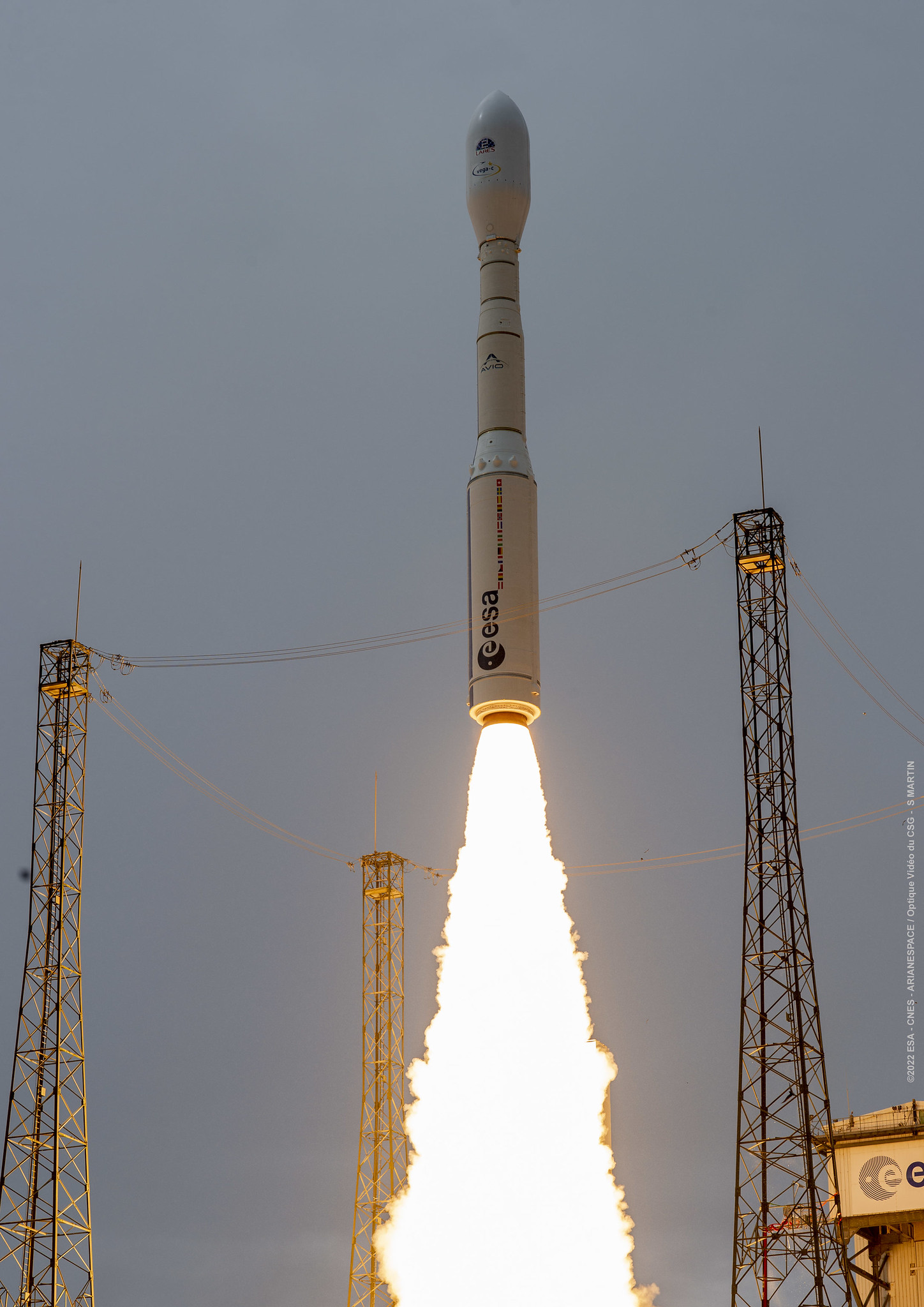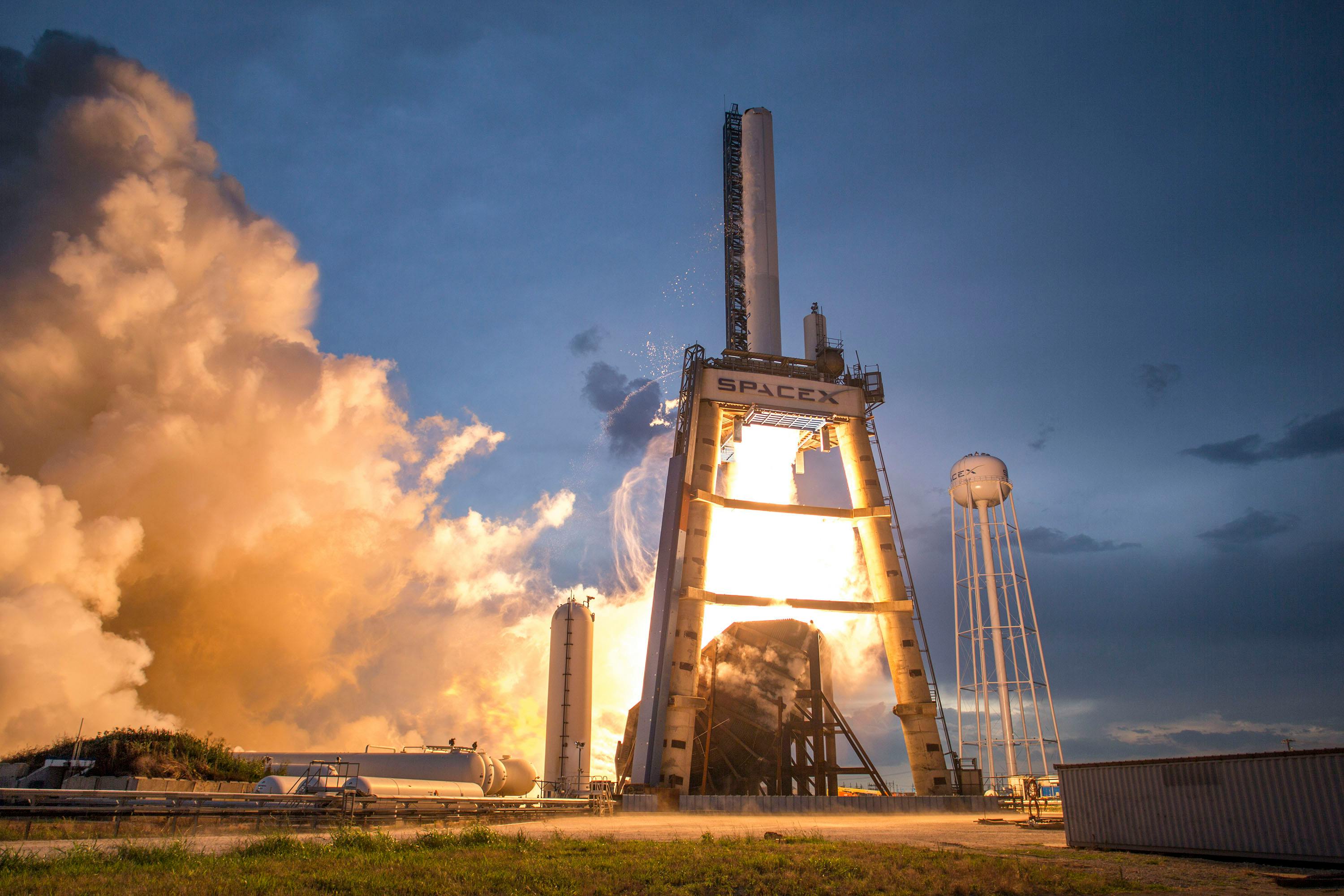· space brief · 4 min read
Space Brief 18 Mar 2025
Today's Space Brief covers the reentry of Firefly's Blue Ghost moon lander, a compelling study on space debris exacerbated by climate change, and new advancements from the Vera Rubin Observatory.

📄Top Stories
Firefly Aerospace has concluded its pioneering mission with the Blue Ghost moon lander going dark. Rising greenhouse gases are revealed as a significant threat to space clean-up efforts, while a groundbreaking telescope camera is set to transform cosmic observations at the Vera Rubin Observatory.
📰Detailed Coverage
Climate Change and Space Debris: A Looming Crisis
A recent study highlights a troubling connection between climate change and the increasing persistence of space debris in Earth’s orbit. As greenhouse gas levels rise, the Earth’s atmosphere becomes less efficient at breaking down space junk. This exacerbates the already critical situation with debris potentially impacting satellites and space operations.
The study serves as a crucial reminder of the interconnectedness of atmospheric science and space sustainability. With more than 100 million pieces of debris orbiting Earth, understanding the evolving dynamics is key for satellite tracking, which can be explored through our web app for enhanced awareness and real-time data access.
Read the full story: Space.com
Farewell to the Blue Ghost Moon Lander
Firefly Aerospace’s Blue Ghost moon lander has officially concluded its ambitious commercial lunar mission by going dark in the lunar night. This marks the end of a record-breaking venture, showcasing significant advances in private space exploration.
The Blue Ghost mission’s achievements pave the way for future lunar initiatives, providing valuable insights for logistics and operation standards for commercial lunar endeavors. Such missions play a crucial role in advancing our understanding and capabilities regarding space tracking and exploration.
Read the full story: Space.com
Vera Rubin Observatory’s New Digital Eye
A monumental milestone was achieved with the installation of the world’s largest digital camera at the Vera C. Rubin Observatory. This technological marvel is set to enable a unique ‘time-lapse record of the universe.’
The telescope’s new digital capacity allows unprecedented data collection and analysis, offering astronomers enhanced tools to study cosmic phenomena. This development not only highlights advancements in terrestrial telescopes but also underscores the synergy between ground-based and orbital observational strategies.
Read the full story: Space.com
SAIC and Defense Unicorns Accelerate Software Delivery
In a bid to expedite software deployment, SAIC has teamed up with Defense Unicorns, emphasizing rapid innovation in defense technology software cycles. This collaboration has shown early success, highlighting the industry’s focus on agile development strategies to improve defense operations’ responsiveness and efficiency.
The swift integration and implementation processes stressed in this partnership are reflective of the defense sector’s evolving tech landscape, fostering faster adaptation to new satellite technologies and operational needs.
Read the full story: Breaking Defense
🛰️Satellite Spotlight
- Satellite Name: CATSAT
- NORAD ID: 60246
- Launch Date: 2024 Jul 4
- Mission: Technology, ionosphere
- Orbit: Inclination 97.2688°, Period 15.28025274, Eccentricity 0.0045456
- Operator: UAZ
- Fun Fact: CATSAT is a CubeSat (6U) designed to study the ionosphere, which plays a crucial role in radio communications and satellite navigation.
Current TLE Data:
1 60246U 24125J 25076.54917128 .00018601 00000+0 66162-3 0 9998
2 60246 97.2688 289.3463 0045456 35.1721 325.2504 15.28025274 37140Track this satellite in real-time on our web app: Track CATSAT
🚀 Upcoming Space Launches
March 18
- SpaceX Falcon 9:
- Starlink Group 12-25 from Cape Canaveral Space Force Station (18:09 UTC)
A batch of 23 satellites for the Starlink mega-constellation, SpaceX’s project for space-based Internet communication system.
- Starlink Group 12-25 from Cape Canaveral Space Force Station (18:09 UTC)
March 20
- SpaceX Falcon 9:
- NROL-57 from Vandenberg Space Force Base, California (06:02 UTC)
Eighth batch of satellites for a reconnaissance satellite constellation built by SpaceX and Northrop Grumman for the National Reconnaissance Office to provide imaging and other reconnaissance capabilities.
- NROL-57 from Vandenberg Space Force Base, California (06:02 UTC)
March 21
- Galactic Energy Ceres-1:
- Unknown Payload from Jiuquan Satellite Launch Center, People’s Republic of China (11:00 UTC)
Details TBD.
- Unknown Payload from Jiuquan Satellite Launch Center, People’s Republic of China (11:00 UTC)
March 23
- Isar Aerospace Spectrum:
- Maiden Flight from Andøya Spaceport (11:30 UTC)
First flight of the Isar Spectrum launch vehicle.
- Maiden Flight from Andøya Spaceport (11:30 UTC)
March 24
-
SpaceX Falcon 9:
- NROL-69 from Cape Canaveral Space Force Station (00:00 UTC)
Classified payload for the US National Reconnaissance Office.
- NROL-69 from Cape Canaveral Space Force Station (00:00 UTC)
-
SpaceX Falcon 9:
- Starlink Group 11-7 from Vandenberg Space Force Base, California (22:00 UTC)
A batch of satellites for the Starlink mega-constellation, SpaceX’s project for space-based Internet communication system.
- Starlink Group 11-7 from Vandenberg Space Force Base, California (22:00 UTC)
March 31
-
SpaceX Falcon 9:
- Fram2 from Cape Canaveral Space Force Station (00:00 UTC)
Fram2 is the world’s first astronaut mission to polar orbit, conducting various research including the first human x-ray images in space.
- Fram2 from Cape Canaveral Space Force Station (00:00 UTC)
-
Gilmour Space Technologies Eris-1:
- Maiden Flight from Bowen Orbital Spaceport (00:00 UTC)
Maiden flight of Gilmour Space’s orbital launch vehicle Eris.
- Maiden Flight from Bowen Orbital Spaceport (00:00 UTC)
-
SpaceX Falcon 9:
- Starlink Group 12-10 from Cape Canaveral Space Force Station (00:00 UTC)
A batch of satellites for the Starlink mega-constellation, SpaceX’s project for space-based Internet communication system.
- Starlink Group 12-10 from Cape Canaveral Space Force Station (00:00 UTC)
Note: Launch dates and times are subject to change due to technical or weather considerations.

Maurice Stellarski





